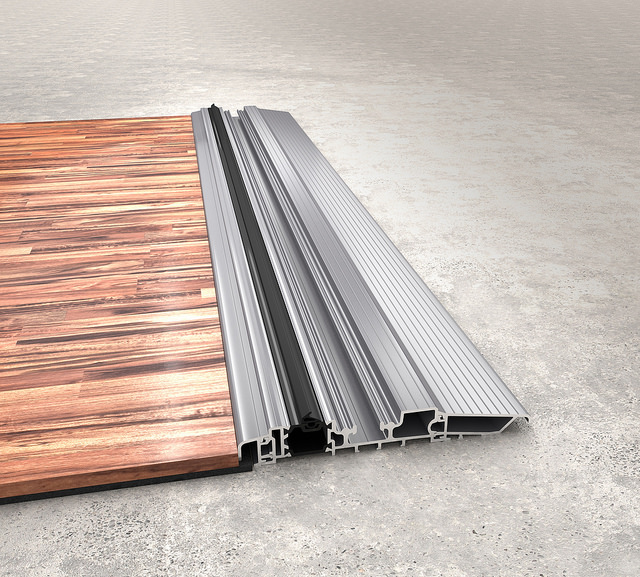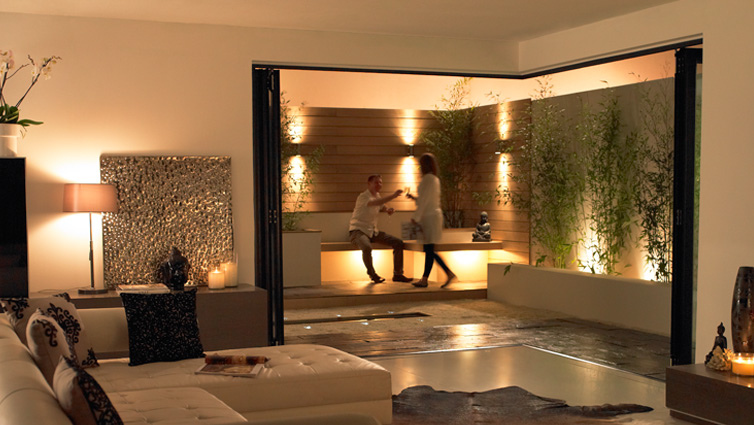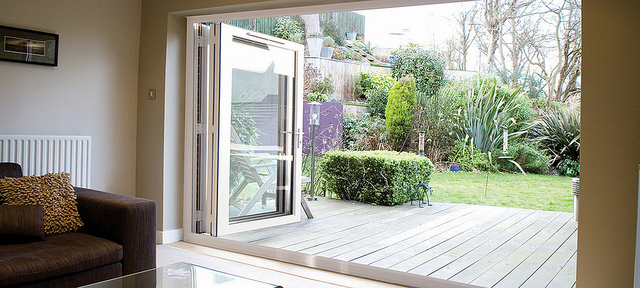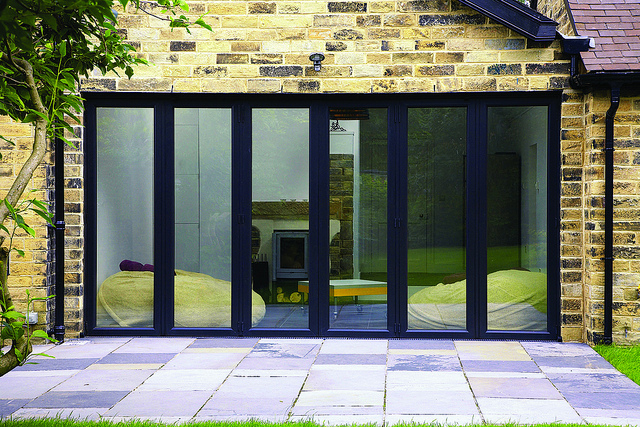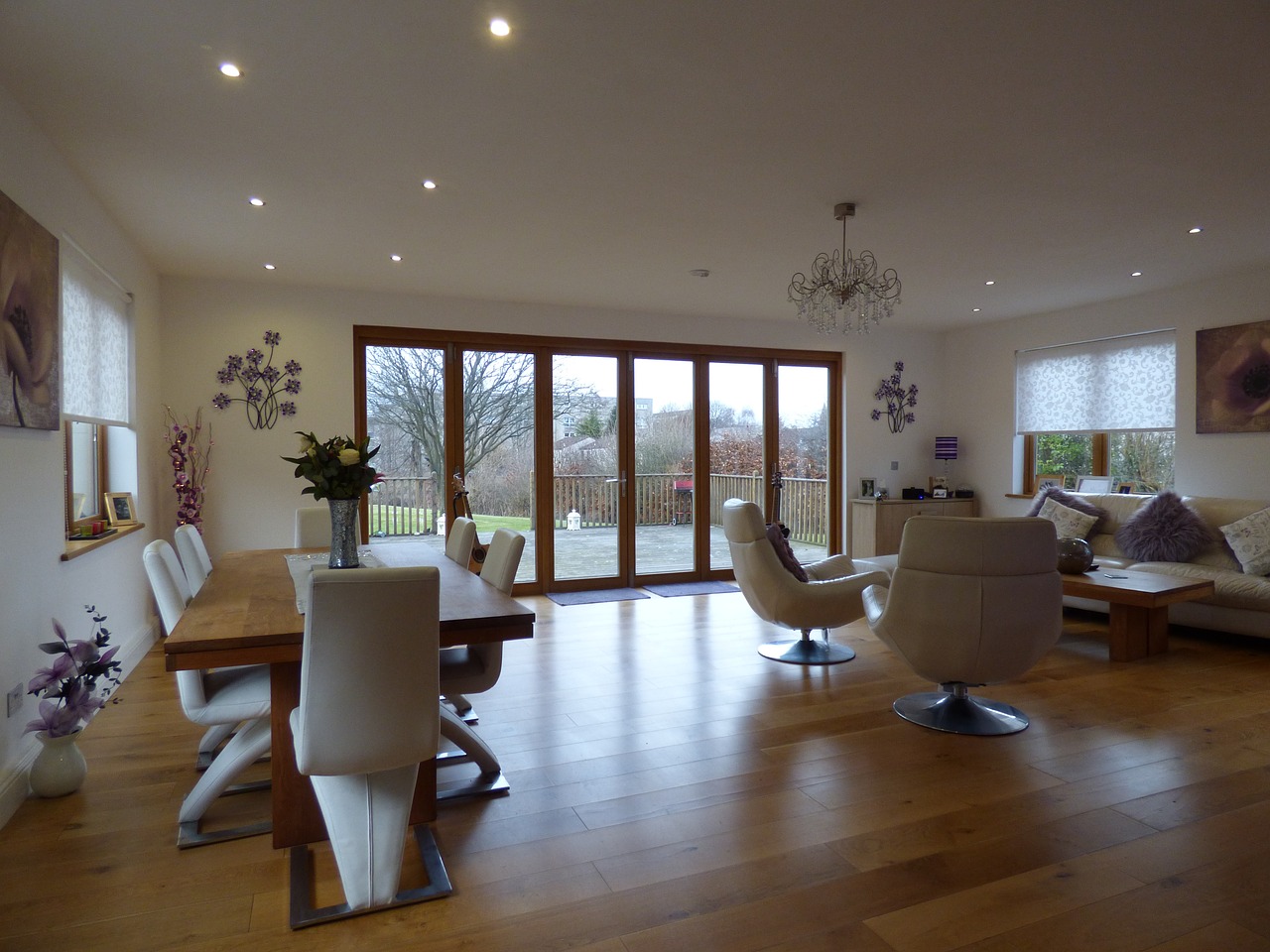Once you’ve made the decision to invest in bifold doors, there are a few other key elements to consider to complete the planning process. You need to decide how to dress your bifold doors of course, but before that, you need to decide what kind of bifold door threshold you will opt for.
Read on to find out more about the different types of threshold options to help you decide on the best one for your new bifold door.
First things first, what is a bifold door threshold?
Simply put, a bifold door threshold is the track which the bottom of a bifold door slides along when it is being opened or closed.
There are two different types of bifold threshold options, and to help you decide on the right one for you, let’s take a look at the pros and cons of each:
Bifold door non-weathered threshold
Pros:
- Flush thresholds could be the safer option for certain households
As non-weathered thresholds offer a flat transition, these lower thresholds don’t pose a tripping hazard to anyone. The fact that there isn’t a raised section makes them safer for households with older inhabitants, children, or anyone who could trip over the protruding lip of a weathered threshold. Flush thresholds can also be supplied with wheelchair ramps for households with people who may have mobility issues.
- A flush threshold offers a cleaner look, and are often chosen by those who are more focused on design
People often opt for non-weathered thresholds for the aesthetics, as the track is usually flush or very low and has no raised sections, which gives a neater look. This is especially relevant for internal doors, as some people want the rooms in their home to flow together seamlessly.
Cons:
- Lack of protection from the weather:
The primary drawback of flush and lower thresholds is that they aren’t as good as protecting the inside from the weather. As there is no solid lip compressing the door against the floor, there may be cracks between the door and the floor. This means they’re not draught proof or rain proof.
Due to the lack of seal, this type of threshold may be more suitable for use on bifold doors within the house, or doors leading out to a more sheltered outdoor area.
Bifold door weathered threshold
Sometimes known as a ‘rebated’ threshold, a weathered threshold is higher than a flush threshold, and features a protruding lip on one edge. There is a seal on the bottom which works to protect the inside from external elements. Weathered thresholds for bifold doors are designed specifically to offer protection against rainy and windy weather, and prevent any draughts or water seeping in.
Pros:
- The primary reason that weathered thresholds are recommended is due to the protection that they offer:
Bifold door weathered thresholds would be more appropriate for external doors that are exposed to the elements, due to the weather tight seal. This type of threshold option can give you the peace of mind that your home will be safe from outside elements such as rain and draughts. This is especially important during extreme weather, so it may be the best choice for you depending on the climate conditions where you live.
As we get a fair amount of rain in the UK, weathered thresholds can be said to be the best option for any bifold doors that lead outside.
- You can also get a low weathered threshold with a more sunken track, to deal with the tripping hazard and design element of it:
There’s a common misconception that all weathered thresholds are high and feature a large protruding lip. In fact, modern weathered thresholds for bifold doors can come with a more sunken track. This means that aesthetically, they don’t look hugely different than non-weathered thresholds.
By getting a weathered threshold with a sunken track, you can protect your home from the elements while also removing the potentially hazardous tripping hazard of a higher threshold.
Don’t forget to think about bifold door drainage
Another element to keep in mind when you’re considering the setup of your bifold doors is the drainage. Thinking about draining options is necessary with external bifold doors, as an adequate drainage function is required to channel water away from the threshold during instances of rain. Bifold door drainage prevents water gathering in the track and channels it away from your home to avoid water accumulation and potential damage.
You can use one of two methods when it comes to bifold door drainage. These methods can be used for thresholds that are weathered or non-weathered:
Face draining: This is when water is channeled out through a hole in the outer face of the lower track chamber. You could then install a drain in front of the door track to route the water away from your home.
Concealed bifold door drainage: This is when water is drained out through a polyamide break barrier to the top of the threshold. It then travels out through the front edge.
When you are trying to decide on the right bifold door drainage method for you, consult a professional as the recommended option will depend on your specific property requirements.
So, is a weathered threshold the best option for all bifold doors?
Keeping in mind all the points discussed above, it is clear to see that weathered thresholds are the perfect option for bifold doors that open out into a garden or other outdoor space. This is primarily due to the superb protection they offer from the elements or any extreme weather. For internal bifold doors, such as those connecting your conservatory to your home, flush thresholds would be adequate and more suitable as they offer a neater look and are relatively safer.
If you’d like to find out more about how bifold doors work and whether they’re the right choice for your home, don’t hesitate to get in touch us. Our team of friendly experts would be happy to discuss all suitable options with you. We can help you to decide whether bifold doors are a good fit for your home and run through the various configurations and design choices available to help you come to the right decision.

